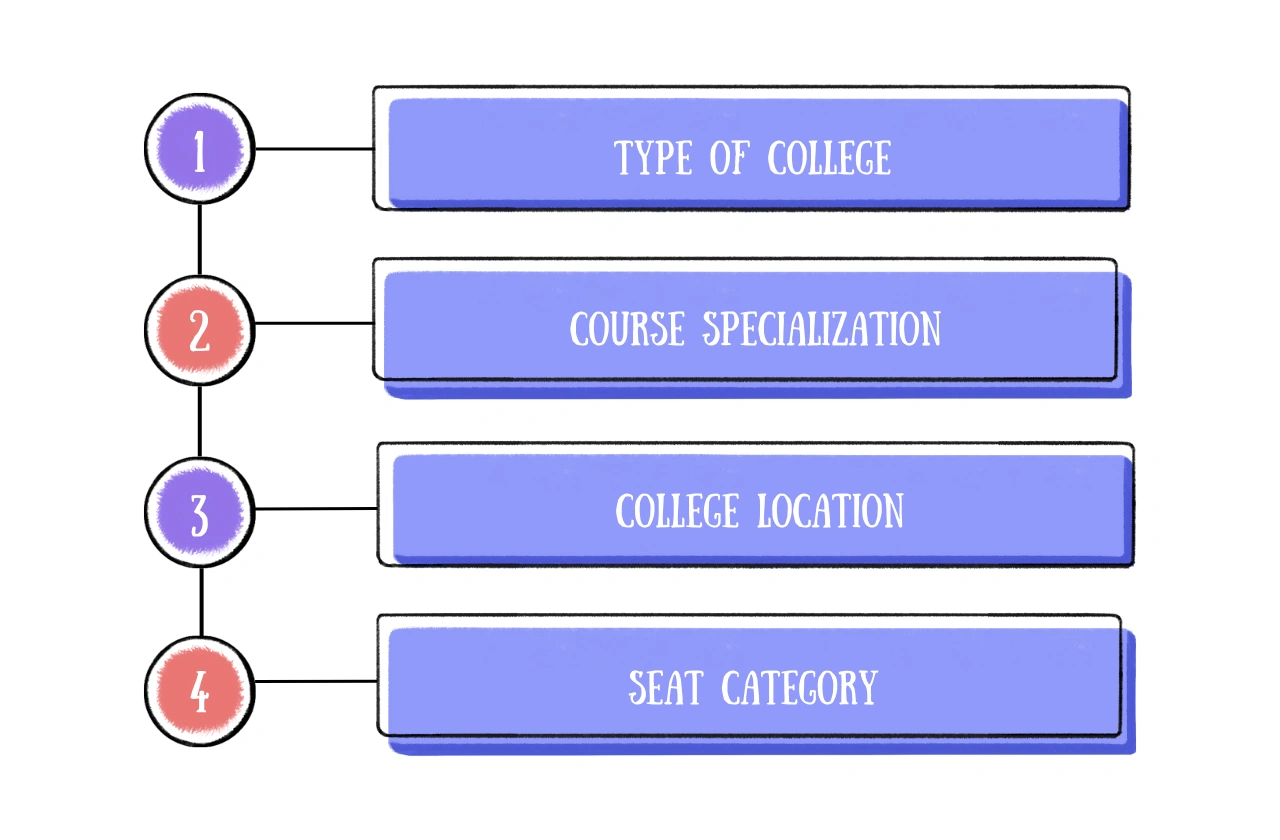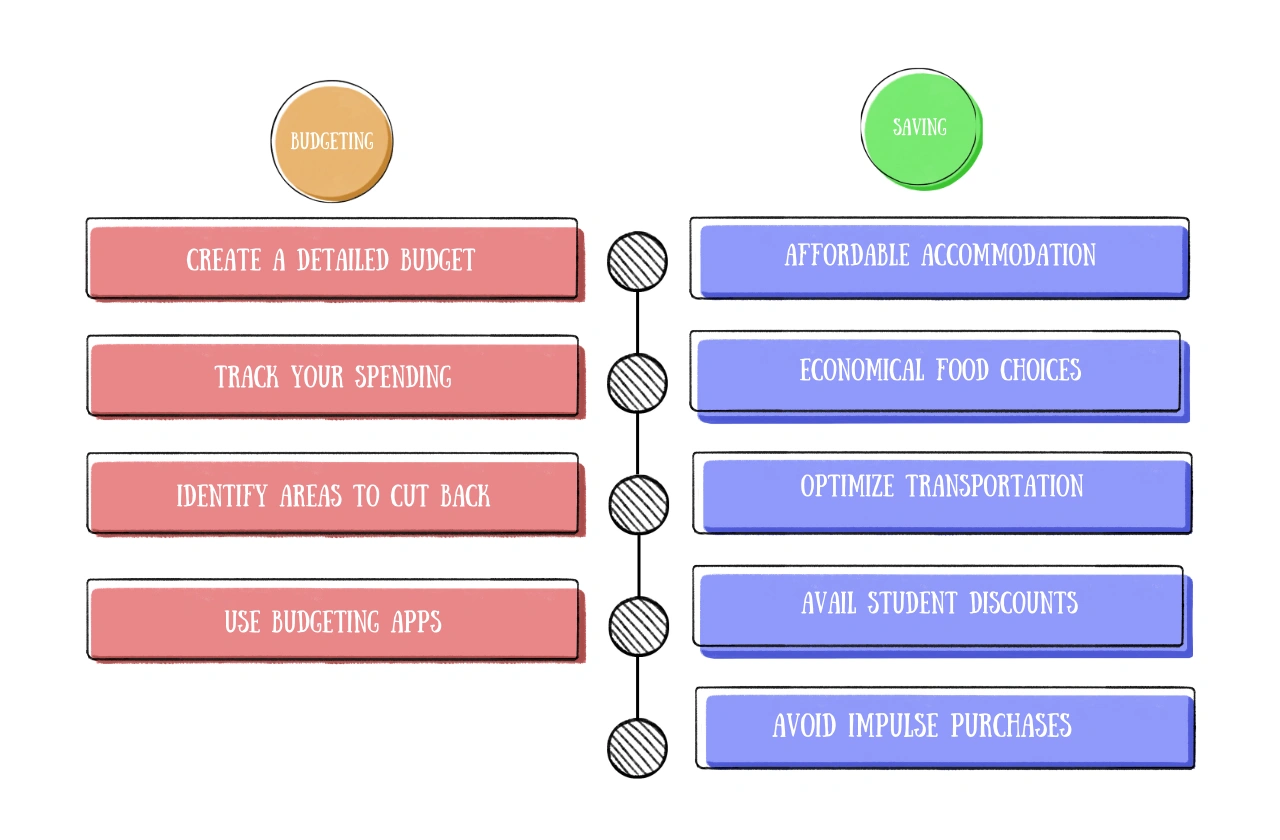The journey to becoming a specialist doctor in India begins with the National Eligibility cum Entrance Test for Postgraduate (NEET PG).
This highly competitive examination opens doors to coveted postgraduate medical (MD/MS/PG Diploma) programs across the country.
However, navigating the complexities of NEET PG fees can be a daunting task for aspirants.
This comprehensive guide aims to demystify the NEET PG fee structure, providing you with the knowledge and insights necessary to plan your finances effectively.
Factors Influencing NEET PG Fees
NEET PG fees vary significantly across different medical colleges in India. This variation stems from a multitude of factors, each playing a crucial role in determining the overall cost of your postgraduate medical education.

1) Type of College:
The nature of the institution you choose significantly impacts the fee structure. Broadly, medical colleges in India can be categorized into three types:
Government Medical Colleges: These institutions receive substantial funding from the government, enabling them to offer medical education at significantly lower fees compared to their private counterparts.
Government colleges often prioritize accessibility and affordability, with many having reserved seat quotas for specific categories like in-service candidates, candidates from economically weaker sections, or those belonging to Scheduled Castes/Scheduled Tribes.
However, it’s important to note that some government colleges may require you to serve a bond period in a government hospital after completing your course as a means of fulfilling a service obligation.
Example: A government medical college in Karnataka might have an annual tuition fee of ₹50,000 for state quota students, while a private medical college in the same state could charge upwards of ₹10,00,000 for the same course.
Private Medical Colleges: Private medical colleges operate independently and rely heavily on student fees to cover their operational costs.
This results in significantly higher fee structures compared to government colleges. Furthermore, private colleges often have management quota seats, which are sold at considerably higher prices, sometimes reaching crores of rupees.
The fee structures can vary greatly between different private colleges, depending on factors such as their reputation, infrastructure, faculty, and location.
Example: A private medical college in Delhi with state-of-the-art facilities and renowned faculty might charge ₹25,00,000 per year for a clinical specialty like Radiology, while a lesser-known private college in a tier-2 city might charge ₹10,00,000 for the same course.
Deemed Universities: Deemed universities enjoy a unique status with autonomy in setting their fee structures. This autonomy often translates to higher fees compared to government colleges, although they may still be lower than some private colleges.
The fees charged by deemed universities can vary significantly based on factors like their reputation, infrastructure, and the specific course.
Example: The All India Institute of Medical Sciences (AIIMS), a deemed university, has a relatively low fee structure, with annual fees ranging from ₹5,000 to ₹10,000. However, other deemed universities like Manipal Academy of Higher Education (MAHE) may have annual fees exceeding ₹15,00,000 for certain courses.
2) Course Specialization:
The specialization you choose also plays a significant role in determining your NEET PG fees.
High-Demand Specializations: Popular specializations like Radiology, Cardiology, Dermatology, and Orthopedics often command higher fees due to increased demand and limited seats.
These branches are perceived to offer better career prospects and earning potential, leading to intense competition for available seats.
Example: A private medical college in Maharashtra might charge ₹30,00,000 per year for MD Radiology, while charging ₹15,00,000 for MD Pediatrics.
Less-Sought-After Specializations: Specializations like Pharmacology, Microbiology, and Community Medicine may have comparatively lower fees due to lower demand.
However, this trend is not absolute and can vary depending on the institution and other factors.
3) College Location:
The location of the college significantly impacts the overall cost of your education, extending beyond just the tuition fees.
Metropolitan Cities: Colleges located in metropolitan cities like Delhi, Mumbai, Chennai, and Kolkata generally have higher fees and living expenses. This is due to the higher cost of living in these cities, including factors like accommodation, food, transportation, and entertainment.
Example: A student pursuing MD General Medicine in a government medical college in Delhi might incur an annual expenditure of ₹3,00,000 to ₹4,00,000, including tuition fees, hostel fees, and living expenses.
Tier 2 and Tier 3 Cities: Colleges located in smaller cities or towns tend to have lower fees and living expenses. This can be a significant advantage for students seeking to minimize their overall expenditure.
Example: A student pursuing the same MD General Medicine course in a government medical college in a tier-2 city like Jaipur might incur an annual expenditure of ₹1,50,000 to ₹2,00,000.
4) Seat Category:
NEET PG seats are categorized into different quotas, each with its own fee structure.
All India Quota (AIQ) Seats: 15% of seats in all government medical colleges are filled through the All India Quota (AIQ) counseling process conducted by the Medical Counseling Committee (MCC).
AIQ seats have a standardized fee structure across all participating colleges, ensuring uniformity and transparency.
Example: The AIQ fee for MD/MS courses in most government medical colleges is approximately ₹1,00,000 per year.
State Quota Seats: The remaining 85% of seats in government medical colleges are filled through state-level counseling processes.
Fee structures for state quota seats vary from state to state, depending on the policies of the respective state governments.
Example: The fee for MD/MS in a government medical college in Tamil Nadu under the state quota might be ₹20,000 per year, while the fee for the same course in a government medical college in Gujarat might be ₹60,000 per year.
Management/NRI Quota Seats: Private colleges and deemed universities offer management quota seats at significantly higher fees. These seats are often sold to the highest bidders, with fees sometimes reaching exorbitant levels.
NRI quota seats are reserved for Non-Resident Indians and are also priced significantly higher than government quota seats.
Example: A management quota seat for MD Radiology in a private medical college in Karnataka could cost upwards of ₹1,00,00,000, while an NRI quota seat for the same course might cost ₹75,00,000.
Now you know what can make NEET PG fees higher or lower. Next, we will look at the different parts of the fee structure.
Dissecting the Components of NEET PG Fee Structure
The total fees you pay for your NEET PG program encompass several components, each contributing to the overall cost.
Tuition Fees (The Core Component):
Tuition fees constitute the primary component of the fee structure, covering the cost of instruction, academic resources, faculty salaries, infrastructure maintenance, and other operational expenses.
Tuition fees exhibit the most significant variation across different colleges, influenced by factors like the type of institution, course specialization, and location.
Example: The annual tuition fee for MD/MS in a government medical college might range from ₹20,000 to ₹1,00,000, while in a private medical college, it could range from ₹5,00,000 to ₹40,00,000.
Hostel Fees:
Hostel fees cover the cost of accommodation provided by the college. The amount varies depending on factors like the type of room (single, double, or triple occupancy), facilities provided (air conditioning, attached bathroom, Wi-Fi), and the location of the hostel.
Some colleges include hostel fees in the tuition fees, while others charge it separately.
Example: A government medical college might charge ₹10,000 to ₹50,000 per year for hostel accommodation, while a private medical college might charge ₹50,000 to ₹3,00,000 per year.
Security Deposit:
The security deposit is a refundable amount paid at the time of admission. It serves as security against any potential damage to college property, non-payment of dues, or breach of college regulations.
The amount of the security deposit varies across colleges and is usually refunded upon completion of the course, subject to deductions for any outstanding dues or damages.
Example: A medical college might require a security deposit of ₹10,000 to ₹50,000 at the time of admission.
Other Fees:
This category encompasses various miscellaneous fees levied by the college, including:
Admission Fees: A one-time fee charged at the time of admission to cover administrative costs associated with processing the application and enrollment.
Library Fees: A fee charged for utilizing the college library and accessing its resources.
Examination Fees: Fees charged for appearing in university examinations and obtaining mark sheets and certificates.
Laboratory Fees: Fees charged for utilizing laboratory facilities and consumables, particularly in pre-clinical and para-clinical subjects.
Sports Fees: Fees charged for utilizing sports facilities and participating in sports activities.
Student Activity Fees: Fees charged for student activities, clubs, and events.
Example: A medical college might charge ₹5,000 as admission fees, ₹2,000 as library fees, and ₹1,000 per examination.
Mess Charges:
Mess charges cover the cost of meals provided by the college mess. Some colleges include mess charges in the hostel fees, while others have a separate fee for meals.
The cost of mess charges varies depending on the quality and quantity of food provided.
Example: A college mess might charge ₹3,000 to ₹5,000 per month for meals.
You now know about the different fees you need to pay. Let’s compare the fees of government and private colleges.
NEET PG Fee Structure: Government vs. Private Colleges
To provide a clearer picture of the fee disparity between government and private medical colleges, let’s examine a comparative table with approximate fee ranges:
| College Type | Tuition Fees (per year) | Hostel Fees (per year) | Total Fees (approx. range) |
| Government | ₹20,000 – ₹1,00,000 | ₹10,000 – ₹50,000 | ₹50,000 – ₹5,00,000 |
| Private | ₹5,00,000 – ₹40,00,000 | ₹50,000 – ₹3,00,000 | ₹10,00,000 – ₹50,00,000 |
| Deemed Universities | ₹3,00,000 – ₹40,00,000 | ₹50,000 – ₹3,00,000 | ₹8,00,000 – ₹50,00,000 |
Important Note: These figures are approximate and intended for illustrative purposes. Actual fees can vary significantly based on the specific college, course, and seat category. Always refer to the official college website or brochure for the most up-to-date fee information.
It is important to plan how you will pay for your NEET PG course. The next section talks about ways to do this.
Funding Your NEET PG: Exploring Financial Avenues
Financing your postgraduate medical education is a crucial step in your journey towards becoming a specialist doctor. Fortunately, various financial avenues are available to help you fund your studies.
Education Loans:
Education loans are a popular option for financing medical education. Several banks and financial institutions offer specialized education loans tailored to the needs of medical students.
These loans typically cover tuition fees, hostel fees, and other related expenses.
- Interest Rates: Interest rates on education loans vary depending on the lender, loan amount, and loan tenure. It’s crucial to compare interest rates from different lenders to secure the most favorable terms.
- Loan Terms: Loan terms, including the repayment period and moratorium period (the period after course completion before repayment begins), also vary between lenders. Choose a loan term that aligns with your financial capabilities and career plans.
- Required Documentation: Lenders typically require various documents to process education loan applications, including academic transcripts, admission letters, income proof of parents/guarantors, and KYC documents. Ensure you have all the necessary documents ready before applying for a loan.
Scholarships (Merit and Need-Based Assistance):
Scholarships provide financial assistance to meritorious students pursuing medical education.
Both government and private organizations offer scholarships based on various criteria, such as academic performance, financial need, and belonging to specific categories (SC/ST/OBC).
- Government Scholarships: The Ministry of Health and Family Welfare, the All India Council for Technical Education (AICTE), and various state governments offer scholarships for medical students.
- Private Scholarships: Several private organizations and trusts also offer scholarships for medical students. Research and apply for scholarships that match your eligibility criteria.
| Scholarship Name | Eligibility Criteria | Amount |
| Nationwide Education & Scholarship Test (NEST Senior) | For Senior – I: 1st & 2nd year students of MBBSFor Senior – II: 3rd, and 4th year students of MBBS | For Senior – I: Rs 35 K (annually) For Senior – II: Rs 40 K (annually) |
| ONGC Scholarship | Meritorious students pursuing MBBS | Rs 48 K annually |
| International Medical Scholarship Eligibility Test (IM-SET) | Class 12 students in any school with minimum of 60% pass percentage in | Up to 100% tuition fee waiver |
| All India Pre-Medical Scholarship Test | 10+2 with Physics, Chemistry & Biology (PCB) aspiring to pursue medical courses | Complete tuition fee waiverA one-year tuition feeLaptop |
| National Scholarship for Persons with Disabilities | Persons with disabilities pursuing professional courses like MBBS | Rs 30 K to Rs 45 K annually |
| GSK Scholars Programme | First year of MBBSAt least 65% marks in Class 12thAnnual family income below Rs. 6 lakh | Rs 1 lakh annually |
| Nurturing Clinical Scientists (NCS) Scheme | Studying MBBS/BDS course with only two years left to completePassed last qualifying exam with 60% or more aggregate marks | Rs 1 lakh per month |
Now you have a better idea of how to manage your money during your NEET PG course.
Tips for Managing NEET PG Expenses
Managing your finances effectively during your NEET PG program is crucial for a stress-free and productive learning experience.
Here are some practical tips to help you stay on top of your finances:

Budgeting:
Creating a budget is the first step towards managing your expenses. A budget helps you track your income and expenses, ensuring you don’t overspend and accumulate unnecessary debt.
- Create a Detailed Budget: List all your anticipated expenses, including tuition fees, hostel fees, food, transportation, books, and stationery.
- Track Your Spending: Maintain a record of your daily or weekly expenses to monitor your spending patterns.
- Identify Areas to Cut Back: Analyze your spending habits and identify areas where you can reduce expenses, such as eating out less often or utilizing public transportation instead of taxis.
- Use Budgeting Apps: Several budgeting apps are available to help you track your expenses and stay within your budget.
Saving:
Saving money during your NEET PG program allows you to reduce your financial burden and focus on your studies.
- Affordable Accommodation: Explore cost-effective accommodation options, such as shared apartments, PG accommodations, or hostels.
- Economical Food Choices: Cook your meals instead of relying on expensive takeout or restaurant food. Consider joining a mess or tiffin service if cooking is not feasible.
- Optimize Transportation: Utilize public transportation, carpooling, or cycling to save on travel costs.
- Avail Student Discounts: Take advantage of student discounts and offers on books, stationery, food, and entertainment.
- Avoid Impulse Purchases: Plan your purchases and avoid impulsive buying.
Now you have a better idea of how to manage your money during your NEET PG course.
Conclusion
Understanding the NEET PG fee structure is crucial for making informed decisions about your medical education and career path.
By considering the factors discussed in this guide, exploring financing options, and adopting prudent financial practices, you can effectively manage the financial aspects of your NEET PG journey and focus on your academic and professional growth.
Remember, careful planning and financial discipline are key to navigating the financial complexities of postgraduate medical education and achieving your dreams of becoming a specialist doctor.

